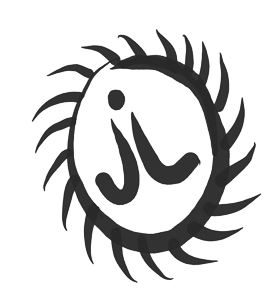Seaweed Project
My work in Ceramics aims to reimagine the ways in which we respond to our environment. Each day the tidelines write a form of language with the flotsam and jetsam. As I walk through this wild landscape I try to read its messages and gain some understanding. I collect, and work collaboratively and intuitively with these found objects. They become the tools and talismans for my work, to speak a voice of place. Sticks, stones, shells, bones, feathers and seaweed connect and reflect the powerful landscapes, forests, oceans and rock pools that surround me.
After listening to Associate Professor Neville Barret talk at the Seaweed conference in 2019, I discovered that the seaweed species in the Huon and Channel were uniquely biodiverse due to our climate and geography. These seaweeds are increasingly under pressure and threatened due to warming oceans. They are uniquely adapted to place and could perhaps disappear with only a handful of scientists knowing. These were the very species I was finding so engaging.
That night on the long drive home to Dover, the idea for the seaweed project appeared: bring them to the surface and give these unique seaweeds their own voice in our world, to sing their songs of resonance and enchantment - a fossil record at this pivotal point in time of life, dancing in suspension. Together they would make a chorus from these underwater gardens, and maybe we could hear and see them in another light. Like the rock pools that so fascinated us as children, I wanted to inspire that same wonder and delight in an underwater world so few see.
I would make a banquet setting for a seafood feast, representing as many of the species as I could find. The ingredients for these magnificent dinners would be from the sea gardens that support us and all the amazing sea creatures who live there, that we love to eat. Each piece and every taste, a reminder of just how special our local marine environments are. Over these dinners we could listen, sharing our stories and knowledge about these places, local community, science and industry together. Maybe we could develop different, reciprocal understandings and ways of seeing, forging new relationships with our environment and each other, bringing to the light ideas on how we can best work together to maintain our local unique ecosystems now and into the future.
I studied four places in this seaweed science and ceramics project: the marine parks of Tinderbox and Ninepin Point, and Dover and Southport. There are eight dinner settings for every site plus serving dishes made with different types of seafood in mind. Each place has its own colourway, an impression of the colour of the sea or the water, like the tannin-stained waters of the Huon. I mixed combinations of four minerals in my glazes - copper, cobalt, rutile and iron - to make each piece its own colour.
Sliding off the rocks and through the looking-glass surface, I spent time floating above seaweeds in the rippling light, giving me inspiration and insights into the next stage of the project. I tried to represent the differing seaweed communities within each of these places, whilst also highlighting individual species. Each piece has the Latin names inscribed on the base. I soon realised it was an impossible task to represent all the species but those that serendipity washed up had to be enough and I see it as an ongoing project.
I was fortunate to have assistance from a grant from Arts Tasmania to pursue this project and the support of Associate Professor Neville Barrett from the Institute for Marine and Antarctic Studies (IMAS).It is also my hope that in the next stage of the project it can be used for a series of community dinners especially in the studied sites and that these gatherings will bring to the surface new ideas and partnerships to move forward in our understanding of our local marine environments.
My gift, an act of love,
for these wild places.

